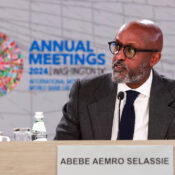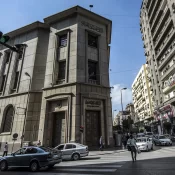
Why do popes change their names? The election of a new Pope is scheduled for Wednesday
Rwanda will be represented for the first time in history in the election of a new pope to succeed Pope Francis on Wednesday, May 7. In order to select the 267th head of the Roman Catholic Church, 135 cardinals are scheduled to gather in the Vatican’s Sistine Chapel, including Cardinal Antoine Kambanda, the Archbishop of Kigali.
It’s a time to celebrate our country. The Rwandan Church is now aware of and participating in international Church concerns since a cardinal is involved in the universal governance of the Church. Father Vedaste Kayisabe, the secretary general of the Council of Catholic Bishops in Rwanda, stated that there had never been this degree of visibility before.
The conclave comes after Pope Francis passed away on April 21 at the age of 88. His death marked the end of a revolutionary pontificate marked by initiatives to increase representation in the College of Cardinals and globalize the Church.
By selecting cardinals from long-overlooked countries, Pope Francis broke with precedent and encouraged a more nationally and culturally diverse electoral assembly.
More cardinals from 71 nations will participate in this year’s conclave than in any other pope election on Wednesday. After a liturgy at St. Peter’s Basilica, the cardinals will go into seclusion and be cut off from all outside communication.
Until a two-thirds majority settles on a new pope, the secret voting procedure will commence in the afternoon and continue for up to four rounds per day.
A handwritten ballot with the Latin words “Eligo in Summum Pontificem” (I elect as Supreme Pontiff) and the selected name is used for each vote. Voting may be suspended for a day of prayer before continuing if, after three days, no pope is chosen.
Smoke rising from the chapel’s chimney indicates the result of each vote; black smoke indicates no decision, and white smoke indicates a victory. After a choice is decided, the famous phrase “Habemus Papam”—”We have a Pope”—is used to introduce the new pope from St. Peter’s Basilica’s central balcony.
According to Reverend Father Deogratias Biabandi of the Byumba Catholic Diocese in Rwanda, Cardinal Kambanda is qualified to be elected pope, just like all previous cardinals, but only under the direction of the Holy Spirit rather than through politics or campaigning.
“The election of the pope is not a political procedure. It is directed by the inspiration of the Holy Spirit and the will of God,” he stated.
The new Pope’s name
Choosing a new name, which has roots in Catholic history and symbolism, will be among the incoming pope’s first choices.
Although it is not doctrinally necessary, the tradition of changing one’s name after being elected has become a crucial aspect of the papal transition, holding layers of significance and indicating the beliefs and vision the pope hopes to uphold. Pope Francis, for instance, was actually Jorge Mario Bergoglio. Joseph Aloisius Ratzinger was the birth name of Pope Benedict XVI, his predecessor.
It was first used in the early Middle Ages. A guy by the name of Mercurius was elected pope in 533. He took the name John II in remembrance of a former pope who had been murdered because he felt it was improper to bear the name of a Roman deity.
By the 10th century, it was normal for popes to adopt a new name, even though they still used their given names for a while. In 1555, Marcellus II became the final pope to use his given name.
Church historians believe that a new name signifies a spiritual rebirth and that the new pope is starting a fresh mission to serve the Catholic people around the world.
Additionally, it demonstrates adherence to the Church’s heritage by frequently recalling saints or forebears whose ideals align with those of the current pope.
St. Francis of Assisi, a 13th-century monk renowned for his commitment to poverty alleviation, peace, and environmental conservation, served as the inspiration for Cardinal Jorge Mario Bergoglio’s choice of the name Francis when he was elected pope in 2013.
Pope Francis subsequently clarified that his instant link with St. Francis was sparked by Brazilian Cardinal Claudio Hummes’ advice to remember the impoverished during the election.
Pope Benedict XVI was named by Cardinal Joseph Ratzinger in remembrance of Pope Benedict XV, who is known for his efforts to promote peace during World War I, and St. Benedict, who is a representation of Christian monasticism and spiritual discipline. Benedict XVI demonstrated his dedication to custom, reflection, and solidarity in this way.
In addition to being personal preferences, papal names frequently act as a pontificate’s compass. Leo, Gregory, or Pius are names that evoke previous popes who were renowned for their theological rigor, reform, or Church growth.
For instance, the name John has been adopted by 23 popes, in part due to its biblical origins and the numerous saints who bear the name, such as John the Apostle and John the Baptist. Pius has been used twelve times, Benedict sixteen times, and Gregory sixteen times.
Some popes, like Lando, Hilarius, or Conon, have selected names that are only used once. In particular, because of respect for the apostle whom Catholics believe Jesus appointed as the cornerstone of the Church, the name Peter, in honor of the first pope, has never been used again.
Jesus told Simon, “You are Peter, and on this rock I will build my Church,” according to Matthew’s Gospel. Eventually, in 64 AD, Peter was martyred in Rome.
Some names are customarily avoided to maintain historical sanctity or avoid misunderstanding, even if there is no official list of names that are prohibited. Additionally, names associated with turbulent or contentious times are typically overlooked. The next pope has complete control over the choice of name, although it is frequently decided soon after the election.
When the pope adopts a new name, it becomes their public persona. His leadership will be shaped by this moniker, which will also determine how history remembers him and how he approaches ideology, diplomacy, and reform.
Not only will observers from all continents be keeping a close eye on the future pope, but they will also be curious about his name. Cardinal Kambanda’s participation in this holy event represents a new phase of interaction with the international Catholic community for the Rwandan Church.
All Categories
Tags
+13162306000
zoneyetu@yahoo.com



